Tell us how you really feel David Colman! In a story for the New York Times style section today (with delightful photo-illustrations, by the way, shot by Douglas Friedman), he celebrates the ’50s- and ’60s-style of young men these days – seen mostly in New York, natch – and lowers the sartorial boom on their elders: “Young men are embracing the “Mad Men” elements of style in a way that the older men never did, still don’t and just won’t. The result is a kind of rift emerging between the generation of men in their 20s and 30s and those in their late 40s and 50s for whom a suit was not merely square but cubed, and caring about how one looked was effeminate.”
Whoa there, boy. Colman makes some convincing points about young men becoming entranced with the sartorial bounce of Rat Pack style as well as the dreary conformity of casual wear that has been adopted wholesale by our society because “it’s comfortable.” But his undisguised scorn for anyone older than (horrors!) 45, who Colman says, is always “the worst-dressed man in the room, wearing a saggy T-shirt and jeans,” permeates the whole story to the point of absurdity.
Equally absurd are some of his conclusions, starting with the one above that boomers find caring about fashion “effeminate” – his word, not mine. I don’t know where he’s been the last 20 years or so, but men of that generation have been as exacting about their style as they have been about their wine, their coffee and their cuisine – and somehow remaining secure in their masculinity at the same time. And yes, young men may have rediscovered the suit, but the “olds” somehow spent millions of dollars on suits from Armani, Prada, Gucci, Ralph and Dolce & Gabbana since they came of age in the ’80s.
Colman also cites blogs like A Continuous Lean and The Trad to bolster his case but that works both ways – even a casual reader of the grandaddy of style blogs, The Sartorialist, will come away with a renewed appreciation for the often-dashing style of men in their middle years – and beyond. Next to images like the one below, some kid rocking a ’60s sack suit in the name of “irony” looks like a rank amateur.
Colman does have one good point – yes, there are lots of men who couldn’t care less about what they put on in the morning, but unfortunately that malaise cuts across all ages. Here’s hoping his precious vanguard of hipster suit-wearers has some effect on the rest of their own generation outside of Brooklyn and Manhattan. But I’m not holding my breath.
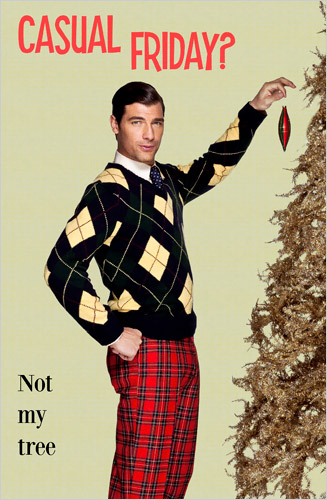
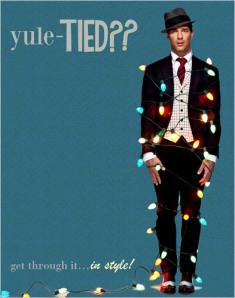
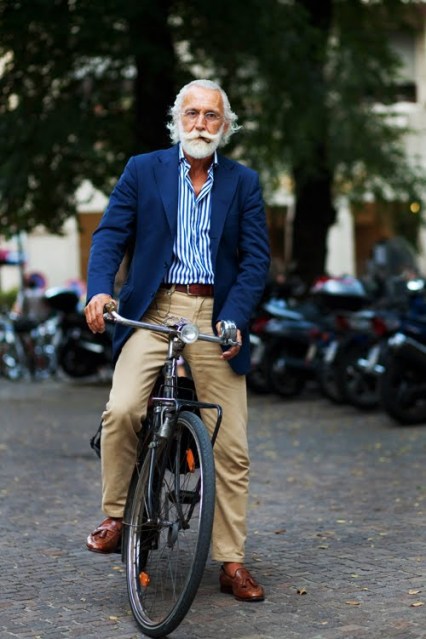
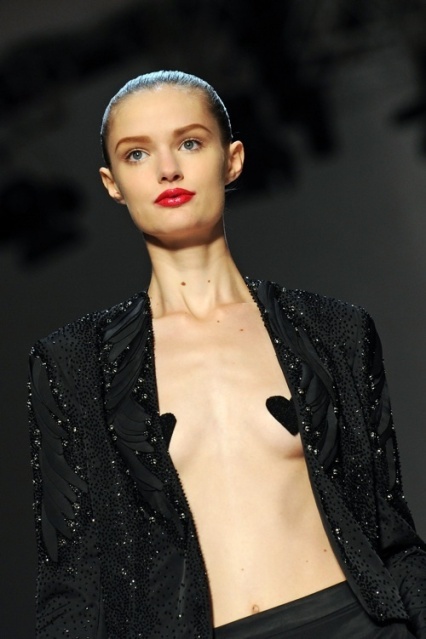

 given this underwear-as-daywear runway season, the designing duo also offered skirts so short that one apparently exposed the rump of one of the models, crayola-bright silk harem pants and Lego-heeled footwear, topped off here and there with white fur stoles slung over the shoulder. Classy. Fuchsia minis at the top of the show were about the only vague reference to Ungaro of old, although who could remember what that even looked like, given the revolving runway of four previous designers who have tried and failed to revive the house in recent years.
given this underwear-as-daywear runway season, the designing duo also offered skirts so short that one apparently exposed the rump of one of the models, crayola-bright silk harem pants and Lego-heeled footwear, topped off here and there with white fur stoles slung over the shoulder. Classy. Fuchsia minis at the top of the show were about the only vague reference to Ungaro of old, although who could remember what that even looked like, given the revolving runway of four previous designers who have tried and failed to revive the house in recent years.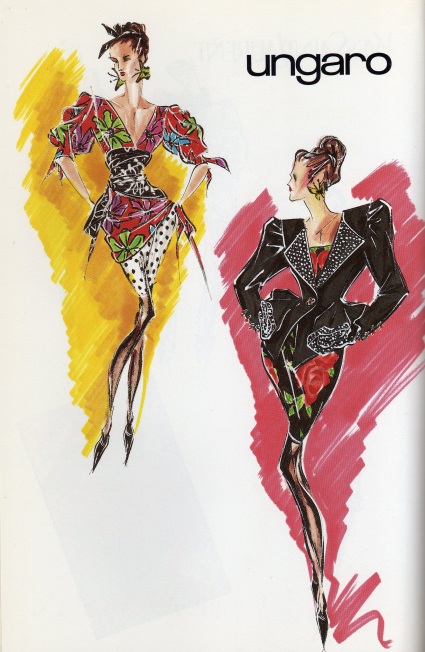
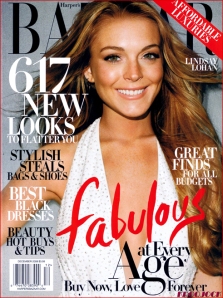 Updating the clothes of yesterday’s maestros to appeal to today’s customers is a thankless task, unless you’re Karl Lagerfeld at Chanel, effortlessly creating clothes both mothers and daughters would kill for. But the money men like Moufarrage keep thinking they can strike gold too, betting the bank on a celebrity and her pasties. They’re not the only ones to hitch their star to the famous; magazines led the way. In the Times piece Harper’s Bazaar editor Glenda Bailey won’t comment on the collection, she’s “running for the door.” But she didn’t run so fast when it came to putting Linds on her cover.
Updating the clothes of yesterday’s maestros to appeal to today’s customers is a thankless task, unless you’re Karl Lagerfeld at Chanel, effortlessly creating clothes both mothers and daughters would kill for. But the money men like Moufarrage keep thinking they can strike gold too, betting the bank on a celebrity and her pasties. They’re not the only ones to hitch their star to the famous; magazines led the way. In the Times piece Harper’s Bazaar editor Glenda Bailey won’t comment on the collection, she’s “running for the door.” But she didn’t run so fast when it came to putting Linds on her cover.